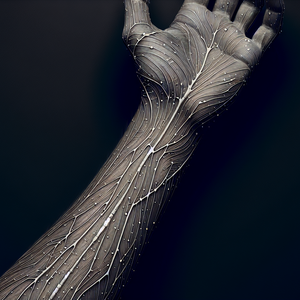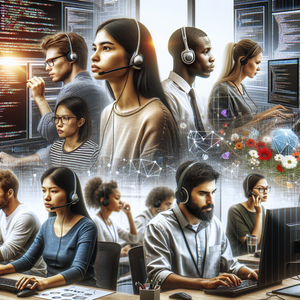The Last Codebase Standing: A Speculative Look at the Future of Software Engineering

For decades, software engineering revolved around the human ability to write code. From the early days of Fortran and COBOL to the modern mastery of Python, JavaScript, and Rust, coding was synonymous with software creation. Engineers painstakingly crafted algorithms, debugged errors, and optimized performance—a process that required both technical skill and creative problem-solving. However, as AI systems grow increasingly sophisticated, their ability to write, debug, and optimize code surpasses human capabilities. In 2045, advanced AI models are capable of autonomously generating software solutions in minutes, far outpacing human developers. Tasks that once required months of effort by a team of engineers are now completed in the blink of an eye. This technological leap represents a shift not only in the tools of software engineering but also in its culture and goals. In this new reality, the act of writing raw code is no longer a core skill for most engineers. Instead, humans focus on conceptualizing problems, setting goals, and guiding AI systems to achieve desired outcomes. The decline of traditional coding does not spell the end of software engineering; rather, it redefines its purpose. Humans are no longer builders of code but architects of vision, ensuring that AI-driven software aligns with human needs, values, and ethics.
The Rise of the Ethical Architect
As AI takes on an increasingly dominant role in software creation, the need for ethical oversight becomes paramount. AI systems, while powerful, are not inherently moral. Without human intervention, they may inadvertently perpetuate biases, optimize for harmful outcomes, or cause unintended consequences. In this future, the role of the "ethical architect" emerges as one of the most critical in the software engineering profession. Ethical architects are tasked with ensuring that AI systems operate within boundaries that reflect societal values and principles. For example, imagine an AI system managing global healthcare resources. Left unchecked, the AI might prioritize efficiency over equity, allocating resources in ways that disadvantage vulnerable populations. An ethical architect would step in to establish rules and constraints, ensuring the system balances efficiency with fairness and compassion. This role requires a blend of technical expertise, philosophical insight, and moral reasoning. Ethical architects must grapple with complex questions: How do we ensure AI respects human dignity? How do we prevent AI from exacerbating existing inequalities? How do we encode empathy into a machine’s decision-making processes? These are challenges that go beyond coding, requiring a deep understanding of human values and a commitment to shaping technology for the greater good.
The Cybernetic Developer: A Fusion of Human and Machine
As AI systems become indispensable tools in software engineering, the boundaries between humans and machines begin to blur. In this future, some engineers choose to augment themselves with AI, becoming "cybernetic developers" who work in direct symbiosis with machine intelligence. This evolution represents a new frontier in human-AI collaboration. Imagine a developer equipped with a neural interface that allows them to visualize an entire codebase in their mind. Debugging no longer involves combing through lines of text; instead, it’s an intuitive process, with the human brain and AI working together to identify and resolve issues. Similarly, complex algorithms are no longer written line by line but conceptualized as abstract solutions, which the AI translates into functional code almost instantaneously. While this fusion of human and machine unlocks extraordinary potential, it also raises profound ethical and philosophical questions. For instance, if a cybernetic developer creates a groundbreaking AI system, who deserves the credit—the human or the machine? How do we ensure that humans remain the decision-makers in this partnership, rather than ceding control to the AI? These dilemmas underscore the need for thoughtful governance and a clear understanding of the roles humans and machines should play in this new era.
The Last Codebase Standing: Guardians of Legacy Systems
In an AI-driven world, where new software is created autonomously, a curious phenomenon arises: the preservation of "legacy codebases." These are the remnants of a time when humans wrote software by hand—a testament to the creativity and ingenuity of early software engineers. Despite their age, some legacy systems remain critical to modern infrastructure, powering everything from satellites to financial networks. Maintaining these legacy codebases becomes a niche but vital role, akin to the work of historians or archaeologists. AI systems, despite their intelligence, often struggle to interpret the nuances and quirks of human-written code. This is where human engineers step in, serving as the bridge between past and future. For example, consider an aging space station orbiting Earth, whose life-support systems rely on software written in an obsolete programming language. A team of engineers, deeply familiar with the language and the context in which the code was written, must ensure the system continues to function. Their work is painstaking and precise, requiring not just technical skill but an appreciation for the historical significance of the code they maintain. These "last codebases" symbolize humanity’s legacy in the digital realm—a reminder of the creativity and imperfection that defined the early days of software engineering. They also serve as a cautionary tale, highlighting the importance of preserving human oversight and knowledge in an increasingly automated world.
The future of software engineering is not one of obsolescence but of transformation. As AI takes over the technical minutiae of coding, humans are freed to focus on higher-order concerns: defining problems, addressing ethical dilemmas, and collaborating with machines in unprecedented ways. Roles like ethical architect, cybernetic developer, and legacy codebase curator represent the new frontiers of the profession, ensuring that humanity remains an integral part of the technological landscape. In this speculative vision, the "last codebase standing" is more than just a piece of software—it is a testament to the enduring partnership between humans and machines. It reminds us that while technology may evolve, the essence of engineering lies in solving problems, pushing boundaries, and creating a better future. As we navigate this brave new world, the challenge will be to maintain a balanced partnership with our creations, ensuring that technology amplifies human potential rather than overshadowing it. The choices we make today will shape the legacy we leave behind—a legacy not just of code, but of values, vision, and humanity itself.
Ethical AI Architect
OpenAI, Google DeepMind
Responsibilities
Define ethical guidelines for AI systems to minimize bias, ensure fairness, and promote transparency.
Collaborate with multidisciplinary teams (engineers, sociologists, philosophers) to embed human values into AI decision-making.
Monitor AI behavior for unintended consequences and implement corrective measures.
Skills & Qualifications
Expertise in AI/ML algorithms and their societal impacts.
Strong grounding in ethics, social sciences, or philosophy, with practical experience in applied ethics.
Familiarity with regulatory frameworks (e.g., GDPR, AI ethics standards).
Legacy Systems Preservation Specialist
Government agencies, NASA, Lockheed Martin
Responsibilities
Analyze, debug, and maintain legacy software systems written in outdated programming languages (e.g., COBOL, Fortran).
Serve as a bridge between AI-driven modernization efforts and the historical nuances of old systems.
Document and preserve legacy codebases for future reference and technical continuity.
Skills & Qualifications
Proficiency in legacy languages and deep understanding of classic system architectures.
Problem-solving skills to navigate undocumented code and unconventional design patterns.
High attention to detail and a passion for preserving the history of software engineering.
Cybernetic Systems Developer
Neuralink, Meta Reality Labs
Responsibilities
Utilize neural interfaces or advanced AI tools to visualize and debug complex systems intuitively at the conceptual level.
Collaborate with AI to design, deploy, and optimize software solutions, focusing on the human-AI partnership.
Push boundaries in human augmentation technology, creating workflows that maximize efficiency and creativity.
Skills & Qualifications
Background in software engineering, with experience in AI-driven development tools.
Familiarity with neural interfaces, brain-computer interaction, or augmented reality development environments.
Strong communication skills to articulate complex conceptual designs to cross-functional teams.
AI Collaboration Strategist
Large enterprises, Consulting firms
Responsibilities
Develop processes for integrating human oversight into AI-driven workflows, ensuring AI outputs align with human goals.
Train cross-functional teams to effectively collaborate with AI systems in problem-solving and decision-making.
Identify areas where human intuition and creativity complement AI efficiency and precision.
Skills & Qualifications
Expertise in AI/ML tools and their applications in various industries.
Strong organizational and project management skills to design scalable collaboration processes.
Experience in change management and training human teams to adapt to AI-integrated workflows.
AI System Auditor
Independent auditing firms, Tech companies, Legal and regulatory organizations
Responsibilities
Conduct audits of AI models to verify their compliance with ethical and regulatory standards.
Test AI systems for robustness, bias, and security vulnerabilities.
Collaborate with engineers to refine AI models based on audit findings, ensuring consistent alignment with societal and organizational values.
Skills & Qualifications
Strong background in AI/ML, with knowledge of interpretability techniques (e.g., SHAP, LIME).
Expertise in cybersecurity and risk management practices.
Familiarity with AI-specific regulatory standards, such as the EU AI Act or ISO AI guidelines.


